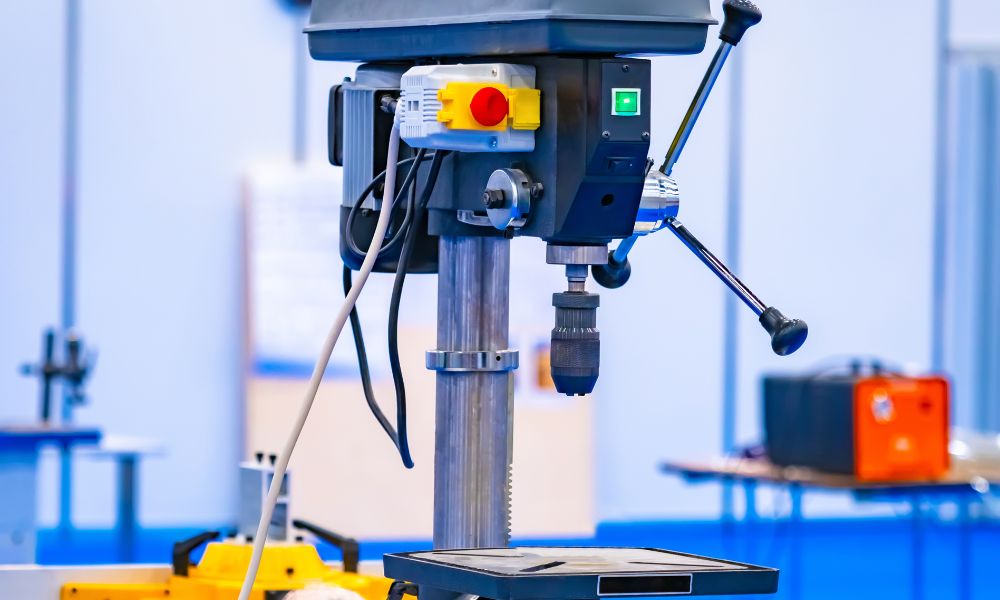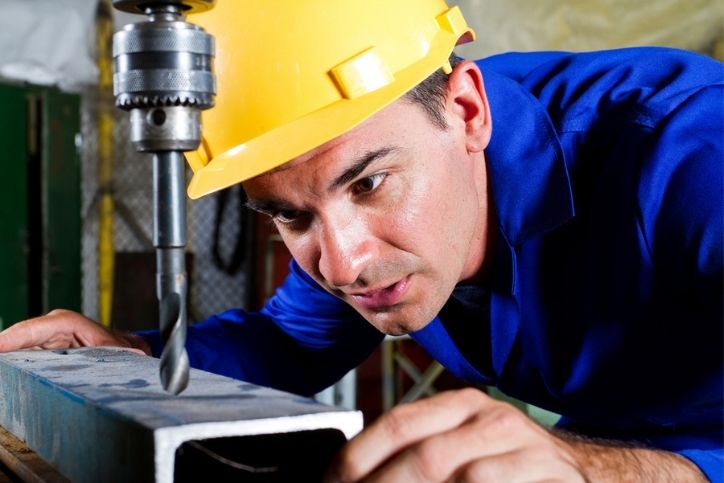What is a drill press used for? This is a question that many people, from DIY enthusiasts to professional machinists, often ask. A drill press, also known as a pedestal drill or bench drill, is a must-have in any serious workshop. From woodworking to metalworking, a drill press offers accuracy, efficiency, and tremendous versatility. In this article, we will delve deeply into the many uses of a drill press, how to utilize this tool effectively, and why it’s a delighted addition to any workspace.
Whether you’re drilling holes for screws in a piece of wood, or creating precise, evenly spaced holes in a metal sheet, knowing the specifics of what a drill press can do and how to use it properly is crucial.

Introduction to Drill Press Technology
The Basics
A drill press is a fixed style of drill that may be mounted on either a stand or bolted to the floor or workbench. The key components of a drill press include the base, column or pillar, table, spindle, and drill head. The base is typically made of cast iron, providing stability while the drill press is in use. The column is the vertical part that holds the table and the head, ensuring a straight and stable motion.
Types of Drill Presses
There are several types of drill presses, including benchtop drill presses and floor drill presses. The benchtop version is compact and can be placed on a workbench, making it ideal for smaller workshops or hobbyists. Meanwhile, the floor drill press is larger and more powerful, suitable for more intensive tasks and industrial settings.
Key Features of a Drill Press
Adjustable Speed
One of the crucial features of a drill press is its adjustable speed. This allows users to set the appropriate speed for different materials, ensuring precision and preventing damage. Wood, metal, and plastic each require different speeds for optimal results.
Depth Stop
Another important feature is the depth stop, which enables users to set a specific drilling depth. This is particularly useful for repetitive tasks where consistent depth is required.
Applications of a Drill Press
Woodworking
For woodworking projects, a drill press is indispensable. It is used for creating precise holes for dowels, screws, and other fasteners. Additionally, it can be used for sanding and mortising.
Metalworking
In metalworking, a drill press is used to drill holes in metal workpieces. The adjustable speed feature is particularly useful due to the different requirements for various metals.
Reaming
Reaming is another application wherein a drill press is used to create a smooth internal surface within a hole.
Counterboring and Countersinking
These processes involve enlarging the top part of a hole to allow the head of a screw or bolt to sit flush with or below the surface. A drill press can perform these tasks with high precision.
Maintenance and Safety Tips
Regular Maintenance
Proper maintenance is key to keeping a drill press in prime condition. This includes regular cleaning, lubrication, and replacing worn-out parts.
Safety Precautions
Safety should always be a priority. Always wear appropriate personal protective equipment (PPE), such as safety glasses and gloves. Make sure to secure the workpiece properly and never attempt to operate the drill press without the safety guards in place.
Advanced Uses and Techniques
Using Jigs and Fixtures
Jigs and fixtures can greatly enhance the functionality of a drill press. These devices hold and guide the workpiece, ensuring consistency and precision, especially in repetitive tasks.
Creating Angled Holes
Angled holes can be created by adjusting the table or using specialized jigs. This is particularly useful for creating joinery in furniture making.
Adding Attachments
Attachments such as sanding drums, mortising attachments, and even rotary tools can expand a drill press’s capabilities, making it a multi-purpose tool.
Comparison with Other Drilling Tools
Drill Press vs. Hand Drill
While a hand drill is portable and useful for many tasks, it lacks the precision and power of a drill press. A drill press provides stability and allows for consistent, repeatable operations, which is crucial for larger projects.
Drill Press vs. CNC Machine
Though CNC machines offer advanced features and automation, they are significantly more expensive. A drill press is a cost-effective alternative for many drilling tasks, offering tremendous value for most users.
Buying Guide: What to Look for in a Drill Press
Table Size and Adjustability
When choosing a drill press, consider the size and adjustability of the table. A larger table is beneficial for handling bigger workpieces, while an adjustable table offers flexibility for a variety of tasks.
Power and Speed Range
The power of the motor and the speed range are also important factors. A more powerful motor and a wider speed range provide versatility for different materials and drilling requirements.
Conclusion
In conclusion, a drill press is an invaluable tool in any workshop, offering precision, versatility, and efficiency. From basic drilling to more complex tasks like reaming and counterboring, a drill press handles it all. The technology behind this tool has been refined over the years, making it a reliable and essential addition to both professional and hobbyist workspaces. For more information and insights into selecting the right drill press for your needs, consider visiting Family Handyman.

Frequent Questions
What materials can a drill press work with?
A drill press can work with a variety of materials, including wood, metal, and plastic. The adjustable speed feature allows you to set the right speed for each material.
How do I maintain a drill press?
Regular maintenance such as cleaning, lubrication, and replacing worn-out parts is essential for keeping your drill press in good condition.
Is a drill press worth the investment?
Absolutely. Whether you’re a professional or a hobbyist, the precision, versatility, and efficiency of a drill press make it a worthwhile investment for any workshop.